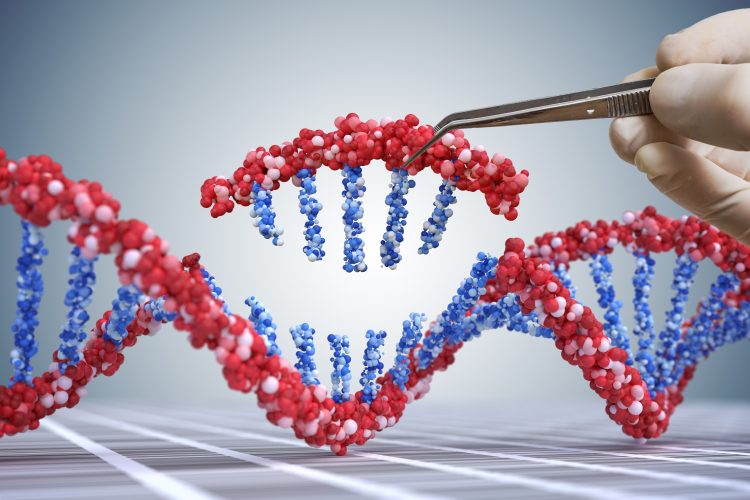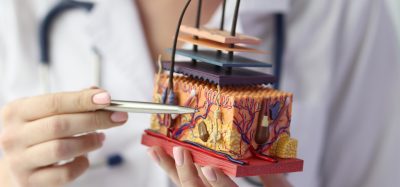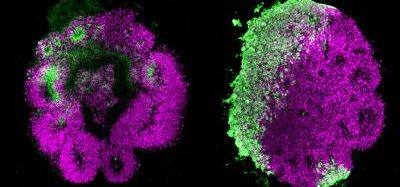New nanostructure makes CRISPR edits safer and three times faster
Posted: 4 September 2025 | Drug Target Review | No comments yet
Northwestern University researchers have created DNA-coated nanoparticles that deliver CRISPR into cells three times more effectively while reducing toxicity. The advance could overcome one of the biggest barriers to gene-editing therapies.


Northwestern University chemists have developed a new nanostructure that improves the efficiency of CRISPR gene editing by up to three times while reducing toxicity. Due to be published on 05 September in the Proceedings of the National Academy of Sciences, the study details how these lipid nanoparticle spherical nucleic acids (LNP-SNAs) deliver CRISPR machinery into cells more effectively than current methods and increase the success rate of precise DNA repair.
The LNP-SNAs are tiny DNA-coated spheres that protect the CRISPR components and guide them to specific tissues. Each particle carries Cas9 enzymes, guide RNA and a DNA repair template, all protected within a dense DNA shell. That shell not only shields the contents but also determines which organs and tissues the particles reach while aiding their entry into cells.
In tests across multiple human and animal cell types, the system outperformed existing delivery methods by a wide margin. LNP-SNAs entered cells up to three times more effectively than the lipid particles used in COVID-19 vaccines, produced significantly less toxicity and boosted editing efficiency threefold. The particles also increased the success rate of precise DNA repair by more than 60 percent.
Chad A. Mirkin, who led the study at Northwestern, said the team focused on overcoming the main barrier to CRISPR’s use in medicine: delivering the editing components into the right cells and tissues.
CRISPR is an incredibly powerful tool that could correct defects in genes to decrease susceptibility to disease and even eliminate disease itself.
“CRISPR is an incredibly powerful tool that could correct defects in genes to decrease susceptibility to disease and even eliminate disease itself,” he said. “But it’s difficult to get CRISPR into the cells and tissues that matter. Reaching and entering the right cells – and the right places within those cells – requires a minor miracle. By using SNAs to deliver the machinery required for gene editing, we aimed to maximise CRISPR’s efficiency and expand the number of cell and tissue types that we can deliver it to.”


CRISPR is a powerful tool for editing DNA, allowing researchers to switch genes on or off, fix harmful mutations and explore how genes affect health and disease. It is seen as one of the most promising technologies in modern medicine. Image credit: Shutterstock/Butusova Elena
The delivery dilemma
CRISPR is a gene-editing system that can cut, disable or repair genes once it is inside a cell’s nucleus. The main challenge is delivery, as the CRISPR components cannot cross cell membranes on their own and require a vehicle.
Only a fraction of the CRISPR machinery actually makes it into the cell and even a smaller fraction makes it all the way into the nucleus.
Researchers have typically turned to viral vectors, which are naturally skilled at infiltrating cells but come with the risk of triggering strong immune responses. Lipid nanoparticles (LNPs), the type used in mRNA vaccines, are considered safer than viral vectors but less effective because they often become trapped inside endosomes within cells, preventing release of their contents.
As Mirkin explained: “Only a fraction of the CRISPR machinery actually makes it into the cell and even a smaller fraction makes it all the way into the nucleus. Another strategy is to remove cells from the body, inject the CRISPR components and then put the cells back in. As you can imagine, that’s extremely inefficient and impractical.”
Enter the spherical nucleic acid
Mirkin’s group took inspiration from spherical nucleic acids (SNAs), a nanostructure he originally invented at Northwestern. Unlike linear DNA and RNA, SNAs form globular shells around a nanoparticle core, typically around 50 nanometres in diameter. These shells interact easily with cell-surface receptors, making them highly effective at penetrating cells. Seven SNA-based therapies are already in clinical trials, including a Phase II trial for Merkel cell carcinoma.
In this study, the team engineered hybrid structures with an LNP core carrying the CRISPR components, surrounded by a dense DNA shell. The DNA strands improved uptake and could be customised to target specific tissues.
“Simple changes to the particle’s structure can dramatically change how well a cell takes it up,” said Mirkin. “The SNA architecture is recognised by almost all cell types, so cells actively take up the SNAs and rapidly internalise them.”
Results across the board
When tested on cultures of skin cells, white blood cells, human bone marrow stem cells and kidney cells, the LNP-SNAs consistently excelled. They entered cells more effectively, caused less toxicity and achieved higher rates of successful gene edits than existing methods. Crucially, the system showed it could support complex DNA repairs – a major hurdle in moving CRISPR-based therapies beyond proof of concept.
The next stage is to test the approach in living disease models, with plans to expand into clinical applications. Flashpoint Therapeutics, a Northwestern spin-out, is already commercialising the platform.
The study shows that the structure of a nanomaterial can be as important as its composition, a concept that forms the basis of structural nanomedicine, a field in which Mirkin has played a leading role.
“CRISPR could change the whole field of medicine,” said Mirkin. “But how we design the delivery vehicle is just as important as the genetic tools themselves. By marrying two powerful biotechnologies – CRISPR and SNAs – we have created a strategy that could unlock CRISPR’s full therapeutic potential.”
Related topics
Analysis, Cell Cultures, CRISPR, cytotoxicity, DNA, Drug Delivery, Enzymes, Gene Therapy, Genetic Analysis, Genome Editing, Genomics, Nanomedicine, Nanoparticles
Related conditions
Genetic diseases
Related organisations
Northwestern University








